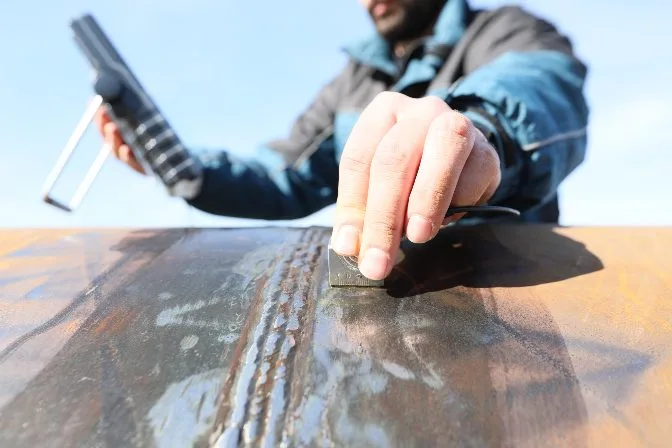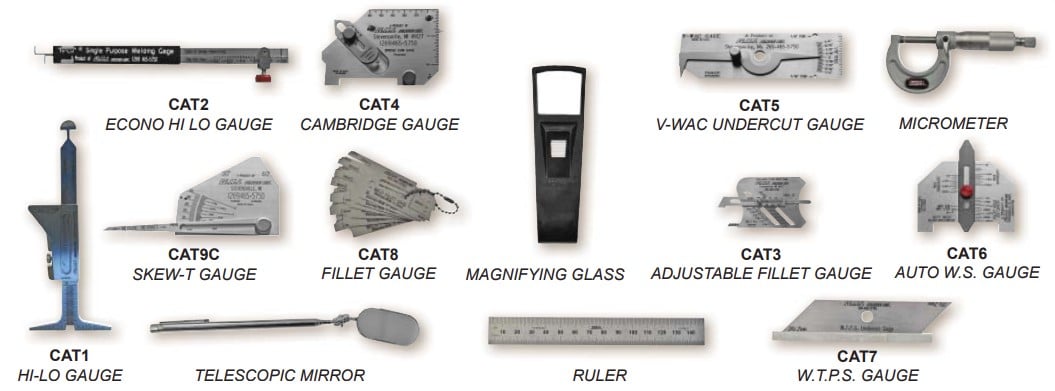The Ultimate Checklist for Welding Inspection Gilbert Arizona: Ensuring Safety and Accuracy
The Ultimate Checklist for Welding Inspection Gilbert Arizona: Ensuring Safety and Accuracy
Blog Article
A Comprehensive Guide to Welding Examination: Understanding Requirements, Techniques, and Best Practices for Quality Control
Welding examination plays a critical role in ensuring the architectural integrity and safety of welded elements, requiring a comprehensive understanding of sector requirements such as those developed by AWS and ASME. Various inspection techniques, including ultrasonic and visual testing, are employed to identify potential defects that can endanger high quality. Furthermore, applying best methods can substantially enhance functional integrity and foster count on amongst customers. As we explore these important components, it becomes obvious that the ramifications of welding evaluation extend much beyond compliance, inviting a closer evaluation of how these procedures form sector criteria and methods.
Value of Welding Examination
Welding inspection plays a critical duty in making sure the honesty and safety and security of bonded structures. It is an essential procedure that validates that welds adapt predefined specifications, which is essential in different sectors, including construction, automobile, and aerospace. By carrying out thorough inspections, prospective flaws such as splits, incomplete fusion, and porosity can be identified early, protecting against catastrophic failings that could cause accidents or expensive repairs.
The significance of welding evaluation expands past mere conformity with guidelines; it likewise cultivates depend on with stakeholders. Clients and governing bodies expect guarantee that the structures they count on are developed to endure operational stresses. Furthermore, effective welding examination practices add to long-term toughness and performance of the frameworks, ultimately bring about minimized maintenance prices.
Furthermore, welding evaluation promotes a society of high quality within companies, urging adherence to ideal methods and continual improvement. By incorporating evaluation procedures into the welding operations, firms can improve their reputation and develop themselves as leaders in quality assurance. In final thought, the significance of welding assessment exists in its capability to protect lives, ensure architectural integrity, and promote industry criteria, making it an indispensable facet of welding operations.
Key Sector Specifications
Ensuring conformity with essential industry standards is essential for preserving the high quality and safety and security of bonded structures. Different companies establish these standards to advertise finest methods in welding and examination - Welding Inspection Gilbert Arizona. Among the most identified are the American Welding Culture (AWS) and the American Society of Mechanical Engineers (ASME), which offer in-depth guidelines and requirements for welding processes and evaluation criteria
AWS requirements, such as AWS D1.1 for architectural welding, outline needs for products, layout, and testing to make certain the stability of welds. Likewise, ASME codes, including ASME Section IX, control the qualification of welders and welding procedures, making certain constant high quality in industrial applications. Internationally, the ISO 3834 common highlights quality demands for fusion welding, supplying a framework for organizations to demonstrate conformity with global finest methods.
Compliance with these criteria not only enhances the reliability of welded frameworks however additionally mitigates risks associated with structural failures. Additionally, adherence to industry criteria is often a prerequisite for regulative approvals and can dramatically influence job specifications. Eventually, understanding and carrying out these essential standards are vital for effective welding inspection and quality control.
Examination Techniques Review
Effective welding examination counts on a selection of techniques created to evaluate the top quality and integrity of welds. These methods can be broadly classified into harmful and non-destructive testing (NDT) techniques. Non-destructive testing methods, which are extensively liked in the industry, permit the assessment of welds without jeopardizing the honesty of the product.

Among the most frequently utilized NDT strategies are aesthetic evaluation, ultrasonic screening, radiographic screening, and magnetic particle testing. Aesthetic assessment is Extra resources often the initial action in the analysis procedure, allowing assessors to identify surface flaws and assess weld grain accounts.
Each technique has its own benefits and constraints, making it important for examiners to select one of the most suitable method based upon the details demands of the task, the products involved, and the criticality of the welds being checked. This mindful selection makes certain comprehensive evaluations and promotes security and top quality criteria in welding procedures.
Usual Problems and Their Effects
A detailed understanding of common issues in welds is essential for preserving structural honesty and security in bonded buildings. Welding problems can significantly jeopardize the mechanical buildings of the joint, causing failures that might endanger both employees and equipment.
Typical defects consist of porosity, which manifests as little gas pockets trapped in the weld metal, weakening the general framework. Splitting is an additional common concern, typically arising from quick air conditioning or inappropriate joint design, causing stress and anxiety focus that can lead to tragic failures. Insufficient blend occurs when the weld steel falls short to correctly bond with the base product, creating powerlessness that might bring about separation under tons.
Various other notable problems consist of damaging, where the weld grain erodes the base metal, and slag additions, which can prevent the weld's toughness. Each of these defects has details ramifications; for instance, porosity can lower ductility, while splitting straight impacts tensile strength. Determining and recognizing these defects during inspection is vital for guaranteeing and carrying out rehabilitative actions conformity with sector criteria, inevitably guarding the architectural honesty of bonded settings up.
Finest Practices for High Quality Assurance
Executing finest practices for high quality guarantee you can look here in welding procedures is necessary for attaining ideal results and minimizing flaws. One important method is the establishment of clear welding procedures that stick to sector criteria and specs. These procedures should consist of thorough directions regarding product option, joint preparation, and welding techniques to make certain uniformity and high quality.
Regular training and qualification of welding workers are additionally crucial. Proficient welders who recognize the value of quality control are more probable to generate sound welds. Additionally, applying a robust examination program, including both visual and non-destructive testing (NDT), can aid determine defects early at the same time, permitting prompt corrective activities.

Lastly, promoting a society of top quality within the company urges employees to prioritize high quality in their work. By adhering to these finest techniques, companies can boost the honesty of their welding procedures, ultimately leading to improved product quality and decreased expenses connected with rework and repair services.

Verdict
In conclusion, welding inspection plays an essential function in guaranteeing the integrity and safety and security of bonded structures. By applying finest practices, companies can improve reliability, decrease maintenance prices, and grow trust amongst clients, inevitably contributing to effective welding operations.
In addition, welding evaluation advertises a culture of high quality within organizations, motivating adherence to ideal practices and constant renovation. In conclusion, the relevance of welding inspection lies in its capacity to safeguard lives, make sure architectural reliability, and support sector standards, making it a crucial aspect of welding operations.
Amongst the most identified are the American Welding Society (AWS) and the American Society of Mechanical Engineers (ASME), which supply detailed guidelines and specs for welding procedures and examination standards.
Ultimately, understanding and executing these crucial criteria are essential for effective welding assessment and top quality guarantee.
Reliable welding inspection relies on a variety of techniques created to examine the top quality and honesty of welds.
Report this page